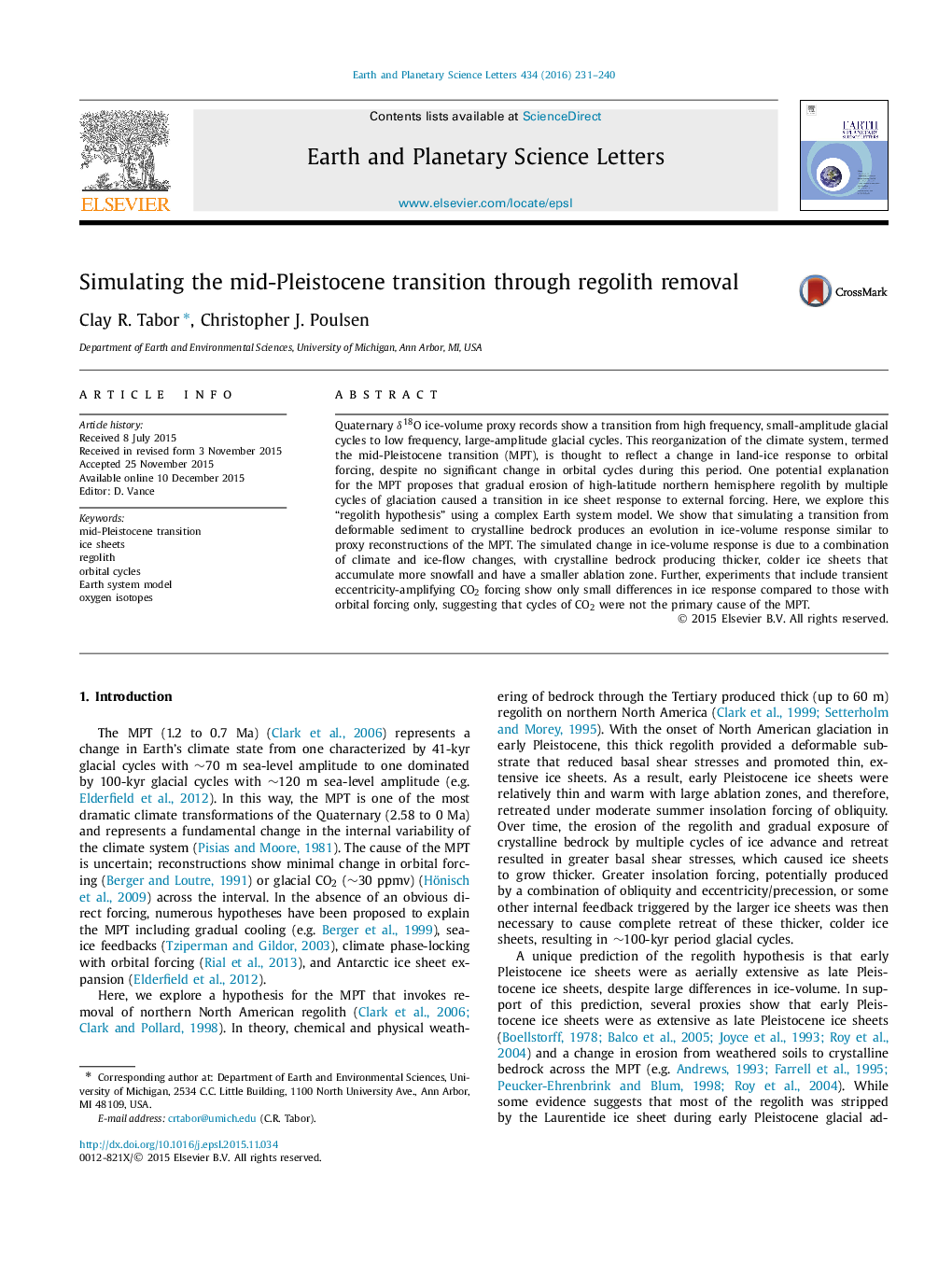| Article ID | Journal | Published Year | Pages | File Type |
|---|---|---|---|---|
| 6427742 | Earth and Planetary Science Letters | 2016 | 10 Pages |
â¢We model the North American land ice response to a reduction in regolith.â¢Low basal drag produces glacial cycles that are dominated by obliquity.â¢Increased basal drag leads to a strong eccentricity signal in ice-volume response.â¢CO2 forcing plays a secondary role in modeled ice-volume response.
Quaternary δ18O ice-volume proxy records show a transition from high frequency, small-amplitude glacial cycles to low frequency, large-amplitude glacial cycles. This reorganization of the climate system, termed the mid-Pleistocene transition (MPT), is thought to reflect a change in land-ice response to orbital forcing, despite no significant change in orbital cycles during this period. One potential explanation for the MPT proposes that gradual erosion of high-latitude northern hemisphere regolith by multiple cycles of glaciation caused a transition in ice sheet response to external forcing. Here, we explore this “regolith hypothesis” using a complex Earth system model. We show that simulating a transition from deformable sediment to crystalline bedrock produces an evolution in ice-volume response similar to proxy reconstructions of the MPT. The simulated change in ice-volume response is due to a combination of climate and ice-flow changes, with crystalline bedrock producing thicker, colder ice sheets that accumulate more snowfall and have a smaller ablation zone. Further, experiments that include transient eccentricity-amplifying CO2 forcing show only small differences in ice response compared to those with orbital forcing only, suggesting that cycles of CO2 were not the primary cause of the MPT.
